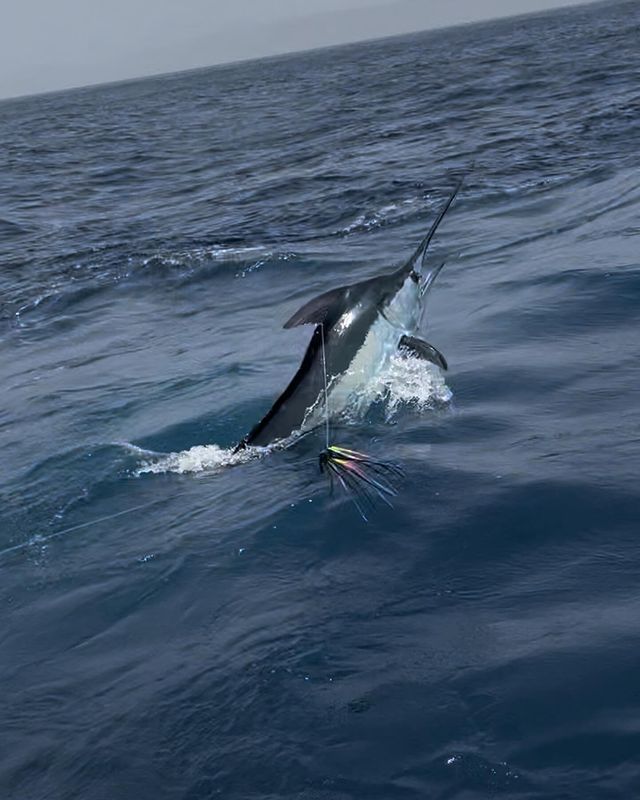Marlin Fishing Tips Guide
Marlin Fishing Tips Guide
Marlin fishing is not just another sport; it’s one of the most thrilling challenges in the angling world. The sheer strength, speed, and size of this majestic fish demand not only courage but also a deep understanding of techniques, timing, and tools. Whether you’re heading to Cape Verde, one of the top marlin hotspots in the world, or planning a trip elsewhere, this Marlin Fishing Tips Guide will help you prepare like a pro.
Fishing for marlin is different from catching smaller pelagic fish. It involves advanced tactics, patience, and the right setup. Knowing how to approach each stage from preparing gear to handling the fight can make the difference between a successful catch and a missed opportunity.
Understanding Your Target – The Marlin Species
The first step in any Marlin Fishing Tips Guide is knowing your fish. There are different species of marlin, but the most sought-after for sport fishing are the blue and black marlin. Cape Verde, for example, is world-renowned for its Atlantic blue marlin, some of which weigh over 1,000 pounds.
Blue marlin are powerful, fast, and capable of dramatic aerial jumps once hooked. They hunt near the surface, feeding on tuna, mackerel, and squid. Understanding their behavior helps you know when and where to target them. They prefer warmer waters and are more active during daylight hours, especially in areas with drop-offs, underwater structures, or abundant baitfish.
Timing Your Trip for the Best Results
Timing is everything when it comes to marlin fishing. In this Marlin Fishing Tips Guide, it’s important to note that while marlin can be found year-round in some regions, they’re far more active during certain months. In Cape Verde, the peak season for blue marlin runs from April through October. This is when the warm currents attract large bait schools, drawing in predator fish.
Planning your trip during this period greatly increases your chances of a catch. Early morning and late afternoon hours are often the most productive times of day, when water temperatures rise and baitfish activity increases. Calm sea conditions also allow for better trolling and spotting fish on the surface.
Choosing the Right Tackle and Gear
A key part of this Marlin Fishing Tips Guide is selecting the right gear. Marlins are extremely strong and fast, so your equipment must be able to handle intense pressure and long fights.
Start with a heavy-duty trolling rod, typically rated for 50–130 pounds. Pair it with a quality conventional reel loaded with high-capacity braided or monofilament line. Most anglers use at least 80-pound test line, often heavier. A solid drag system is essential to manage the long runs and sudden turns marlin are known for.
Leaders should be made of abrasion-resistant material, as marlin can easily wear through standard lines during a fight. Use wind-on leaders for smoother retrieval, especially when the fish gets close to the boat.
Lures matter too. Artificial lures such as skirted trolling lures in shades of blue, pink, or purple are popular choices, especially in clear waters. Rig them with sharp, strong hooks and ensure they mimic the swimming motion of natural bait.
Some anglers prefer live bait like small tuna or mackerel, especially when marlin are finicky. Both methods can be effective, but you’ll want to match your approach with the local conditions and season.

Mastering the Trolling Technique
Trolling is the most common method for catching marlin. It involves dragging multiple lures or baited hooks behind a moving boat at varying distances and depths. In this Marlin Fishing Tips Guide, knowing how to set your trolling spread is critical.
The idea is to create an attractive, natural-looking pattern on the surface to entice marlin. You typically run four to six lines at once, positioning some closer to the boat and others farther back. Outriggers help spread the lures wide, while a centerline keeps a bait directly behind the wake.
Speed is also crucial. Most trolling for marlin happens at speeds between 7 and 9 knots. Too slow, and the lures won’t move naturally. Too fast, and they’ll skip unnaturally or cause the bait to spin.
Keep an eye on the water surface. Marlin often announces their arrival with swirls or fin flashes before striking. Once the fish takes the bait, allow a brief pause before setting the hook to ensure a solid connection.
The Fight – Staying Focused and Patient
Hooking a marlin is only half the challenge. The real test begins when the fish starts its fight. One of the most important lessons in this Marlin Fishing Tips Guide is how to manage the fight from hook-up to landing.
Marlin will often make long runs and powerful jumps. This is when many fish are lost due to slack lines or equipment failure. The angler must stay calm, keep the rod tip high, and adjust the drag carefully to maintain tension without overloading the gear.
Communication between the angler and the boat crew is key. The captain will maneuver the boat to follow the fish, often in reverse, to keep it within range and prevent too much line from being pulled out. The crew may also assist with gaffing or tagging once the fish is close.
This phase can last anywhere from 30 minutes to several hours, depending on the size of the marlin and sea conditions. It requires endurance, strength, and careful adjustments to prevent line breaks or fatigue.
Practicing Ethical and Responsible Fishing
Every responsible Marlin Fishing Tips Guide should highlight the importance of ethical fishing practices. Marlin populations in some parts of the world are under pressure due to overfishing. That’s why many sport fishing charters, especially in places like Cape Verde, promote catch-and-release fishing for marlin.
Using circle hooks instead of traditional J-hooks helps improve survival rates of released fish, as they are less likely to cause internal injury. When handling a marlin, keep it in the water as much as possible, avoid touching its gills, and release it quickly and carefully.
Tagging programs are also gaining popularity. By tagging and releasing marlin, anglers contribute valuable data to conservation groups and scientists tracking fish migration and health.
Being respectful of the environment and the fish itself ensures that future generations can also enjoy the thrill of marlin fishing.
Learning from the Locals and Charter Experts
No Marlin Fishing Tips Guide is complete without recognizing the value of local knowledge. Whether you’re in Cape Verde, Costa Rica, or Australia, experienced charter captains and crews know the waters, patterns, and behaviors of marlin better than anyone.
Hiring a reputable charter boat with a solid track record gives you access to this expertise. These professionals know where marlin tend to feed, how weather and currents affect activity, and what lures or bait work best in current conditions.
Ask questions, observe how the crew sets the lines, and listen to their advice during the fight. Every trip is an opportunity to sharpen your skills and learn something new.
Even seasoned anglers benefit from guidance, especially when fishing in unfamiliar territory. And with destinations like Cape Verde offering some of the world’s best marlin action, it’s worth trusting the people who fish those waters every day.
Conclusion: Turning Knowledge Into Experience
This Marlin Fishing Tips Guide is designed to help you prepare mentally, physically, and technically for one of the greatest fishing challenges in the world. From choosing the right gear to understanding fish behavior and handling the fight, every detail matters.
Marlin fishing is more than catching a trophy; it’s about the journey, the struggle, and the moments when you test your limits against a wild force of nature. Whether you’re heading to the rich waters of Cape Verde or another marlin hotspot, having the right knowledge will increase your chances of success and enjoyment.
Remember, every marlin caught or even lost is a story in itself. And with the right preparation, your next marlin fishing adventure could be the one that you’ll talk about for years to come.


